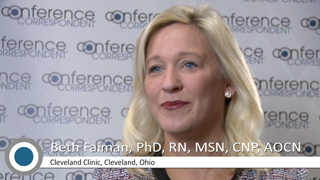Imagine being newly diagnosed with chronic myelogenous leukemia (CML), a neoplasm of hematopoietic stem cells caused by the Philadelphia chromosome t(9;22). In decades past, individuals diagnosed with CML were offered allogeneic hematopoietic stem cell transplant (allo-HSCT). Survival rates with allo- HSCT are lower compared with newer therapies mainly due to the risk of graft-versus-host disease and infectious complications. Now many of these patients qualify for at-home treatment with oral tyrosine kinase inhibitor medications such as imatinib (Gleevec), dasatinib (Sprycel), and nilotinib (Tasigna). Imatinib carries an impressive 5-year overall survival rate of 89% and an 8-year survival of 85%.1 A newer drug, nilotinib, has shown a higher rate of complete cytogenetic response (CCyR) and improved progression- free survival than imatinib.2
Studies have shown that patients who achieve a CCyR will remain in remission longer than individuals who do not. Taking the prescribed medication as recommended increases the likelihood one would achieve a CCyR. You would imagine that when given this information the individual with CML would want to remain as adherent as possible to the regimen, right? Unfortunately studies have shown that the rate of full adherence to imatinib therapy may be as low as 14%.3 Studies of adherence in cancer patients, cited in Dr Hansen’s article, demonstrate that despite the gravity of a cancer diagnosis, cancer patients are not always adherent to treatment. As Dr Hansen described, nonadherence often has a negative impact on a patient’s outcome.
Intentional and unintentional nonadherence are 2 factors that can be addressed. Intentional nonadherence includes considerations such as lack of trust in the provider, or the patient not taking the medication because he or she “does not really need it.” Intentional nonadherence is an issue that can indicate long-term inability or unwillingness to adhere to a treatment. To address this issue, the clinician or provider should strive to enrich the patient-provider therapeutic relationship through skillful communication. Why is the patient reluctant to take the oral medication as prescribed? One should reinforce the rationale for the selected therapy, review responses, and allow time to answer questions.
Unintentional nonadherence includes missed doses or taking medications on the wrong schedule. When self-administered drugs are prescribed, patients can take their medication at home instead of needing an appointment at the clinic for administration of treatment. As a result, visits to the clinic are less frequent, which saves time and reduces costs such as office copayments and administrative fees. However, self-administration can increase the risk for medication errors and compromise the intended outcome of therapy.4 Patient education should include information about dosages, what tablets look like, and how many of each to take at what interval. Additional educational tools described by Dr Hansen include chemotherapy calendars, diaries to record medications, pillboxes, and contact information sheets.
There has been an influx of new oral medications to treat a variety of cancers within the last decade. Benefits of home chemotherapy administration come with a trade-off. Intentional and nonintentional nonadherence can occur. The clinician should employ strategies for ongoing education and therapeutic communication to improve adherence.
References
- Gleevec [package insert]. East Hanover, NJ: Novartis Pharmaceuticals Corporation; 2012.
- Saglio G, Kim DW, Issaragrisil S, et al. Nilotinib versus imatinib for newly diagnosed chronic myeloid leukemia. N Engl J Med. 2010;362:2251-2259.
- Marin D, Bazeos A, Mahon FX, et al. Adherence is the critical factor for achieving molecular responses in patients with chronic myeloid leukemia who achieve complete cytogenetic responses on imatinib. J Clin Oncol. 2010;28:2381-2388.
- Bartel SB. Safe practices and financial considerations in using oral chemotherapeutic agents. Am J Health Syst Pharm. 2007;64(suppl 5):S8-S14.


